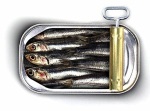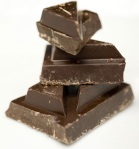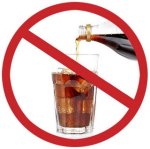This is a Guest Post from Patrick: An active triathlete with multiple Ironman and marathon finishes on his resume, Patrick writes weekly on the power of integrating life and sport into a sustainable lifestyle of fitness. Learn more at  http://www.patrickjohnmccrann.com.
http://www.patrickjohnmccrann.com.
For many of us, coffee is an integral part of daily life. From artesian roasts to grand goodness to just your plain old cup of joe, odds are you are one of the 112 million Americans who drink a cup of coffee a day. But it’s not all flowers and gumdrops — a significant portion of coffee drinkers use caffeine to power through their days on minimal sleep. As an appetite suppressant, caffeine masks hunger. And as a diuretic, coffee can make us dehydrated as well.
In the digital age of the 24/7, more-is-always-better lifestyle, caffeine is an alluring (and legal) way to push our bodies beyond their natural limits. But what goes up must come down; eventually that coffee-fueled high becomes harder to obtain. We become irritable without enough sleep, and erratic eating combined with poor hydration is a recipe for physical misery.
After a season-ending bicycle crash broke my hip, I began to re-evaluate how I was managing my diet and overall nutrition. I resolved to quit caffeine and even went on a 30-day cleanse (that’s another story).The biggest outcome is now I now am leading a very simple daily life free of caffeine. The transition wasn’t easy, but it helped me to achieve new levels of balance in my day, overall wellness and improved productivity. Here’s how it all went down.
My Caffeine-Fueled Decline
As an Ironman athlete and online entrepreneur, I spent the better part of the last five years chasing excellence on a steady diet of minimal sleep and ever-increasing amounts of caffeine. What started as a cup a day became three, became five or more.
It quickly became an integral part of my existence, allowing me to plow through any obstacle (real or imagined). Of course, I didn’t have any super-powers…I just felt that way. Here are some of the tell-tale troubling signals that I ignored…
The Training Effect… I sought out other forms of caffeine in my day. In classic addict fashion, I wouldn’t count it as caffeine as it wasn’t another cup of coffee…but I was deceiving myself. My classic midday Ironman workouts was a 4,000 yd pool swim with a 2-liter bottle of coke in my locker for fuel pre- and post-workout. On bad days I put it in my water bottle on the pool deck!
The Work Effect… I began to associate coffee with work. Every time I was going to start a new big task, I’d make more coffee. Making the pot of coffee became a work-related ritual. It certainly didn’t help things when I launched my own company and started workout out of various coffee shops.
The Physical Effect… My breath smelled awful. My bag and laptop smelled of coffee. I was habitually dehydrated. There was almost no way for me to keep up given the constant flow of coffee. Drinking all that water just seemed like a lot of work!
The Nutritional Effect… Outside of dinner I practically had no regular eating schedule. I wouldn’t be hungry in the morning (thanks to coffee) and I could get by with a quick meal (plus some coffee) after a good workout. Dinner was with the family, but late at night the hunger would catch up to me, leading to some seriously bad food choices made staring at the fridge in my PJs.
The Nature of the Addiction…
Unlike many of the other things that we have come to rely upon, like our cell phones and computers, coffee contains the addictive substance of caffeine. Even though there’s just about 200mgs of caffeine in a typical cup of coffee, it’s enough to alter how our brains and bodies act on a fundamental level.
In retrospect I was after something more powerful. Sure the coffee tasted good, but it wasn’t the jolt of coffee that drove me.
…It as much Behavioral as it is Chemical!
In my case the caffeine enabled me to do more for short (and increasingly shorter) periods of time. I’d say that my true addiction was to feeling super-powered. I could get up at 4am and work for a few hours before the kids got up. I could stay up late…as late as I wanted, because I could use caffeine to control when I was actually tired.
I wondered aloud if I could get by on just 4 hours of sleep a night. Less sleep meant more time to do stuff, and my next big idea was always only a cup of coffee away. I was a few steps removed from feeling invincible.
My (Sudden) Wake Up Call
I crashed my bike in mid-May of 2010, fracturing my hip and collar bone. In an instant, I knew my life was going to be different. This was confirmed mere hours later after repeated painful Xrays and MRIs of my pelvis. In a split second I went from climbing up mountains on my bicycle to being in a wheelchair for 3-4 weeks with my biggest workout goal simply being to try and walk.
Without exercise to offset my coffee habits, I quickly had tons of extra energy with nowhere to burn it off. I saw that:
Coffee actually made me agitated and jumpy.
Coffee disrupted quality eating. I could almost go a full day without feeling a need to eat b/c of coffee, only to binge later. My weight ballooned and I was relying on loose-fitting sweatpants and shorts.
I used coffee to chase fatigue away, but I couldn’t eliminate that fatigue entirely. This just led to a vicious cycle of blood sugar highs and lows, a self-perpetuating roller coaster of euphoria/energy followed by disabling fatigue.
Taking the No-Caffeine Pledge
I was clearly becoming a liability and knew something had to change. I am not one to pick the easy road — it’s not sexy enough to work hard for — and the best path seemed simple: no more coffee for 30 days. Go.
It wasn’t easy, but I was able to do it. The first two days were the worst. I was irritable and grumpy. I had a headache to die for. If you told me pushing that baby deer off a cliff would have stopped my headache…well, let’s just say it wasn’t good. I hear that most folks experience a headache, become irritable and find it hard to concentrate. That said your symptoms will depend on just how much caffeine you consume on a regular basis, and could become more severe. Some people report depression, nausea, vomiting or muscle pain.
Typically, symptoms began 12 to 24 hours after stopping caffeine, with peak intensity lasting one to two days. But researchers have found that withdrawal can last up to nine days in some cases.
I had two powerful change agents helping me out during my 30-day journey. First, I signed on to do an overall cleanse with my wife. This meant I was not alone in making sacrifices and looking to improve how I was treating my body. Caving to coffee would have meant going back on what she and I were doing together. Second, I drew a very black-and-white line: no coffee for thirty days is pretty clear. No half way steps of half-caff drinks from Starbucks. I had to go thirty days (a time line helps), and I could drink no caffeine. Coke was bad, but I could drink non-caffeinated teas, for example.
The most important thing was that even though I felt like junk, even early on I could see positive signs of change.
Right away I had the best damn night of sleep in over a year. I literally slept for nine straight hours, the first time I had done that without being sick since I was about 17 years old. It was as if I was getting over a time-change from a big trip…and in some way I totally was. This continued for about six weeks; only recently have I been able to get by on a more reasonable six hours sleep with no ergogenic aids.
I actually began eating breakfast again, and I don’t mean Chocolate Frosted Kibble Bits. A real breakfast meant my workouts were better (I had energy!), it meant I could skip my morning snack and head right into lunchtime looking for another substantial meal. A huge step for me.
My writing and other creative work exploded. Turns out that all the coffee I was drinking kept me working more, but not any better. By unplugging from my 24/7 energy source, I had time offline to process ideas and engange new concepts. My writing became more enriched, my concepts were more complete right from round one. This was the biggest “gotcha” from the no caffeine move.
I was better able to manage my time. I began single tasking (a topic I explore in my forthcoming new book), as I could focus really well for a short period of time. Gone were the coffee-power, twenty simultaneous tabs open in Firefox, ricochet-like work sessions where I would skip to the next task because waiting for a page to load was often too long.
That I saw a performance improvement in my training almost came as no surprise. Sure folks talk about caffeine as an ergogenic aid, but in my case it prevented me from doing the daily things required to be able to train at a higher level. Now that I was getting real sleep and eating on a proper rhythm, my workouts took off. I was able to consistently workout at higher intensities. I needed less recovery time and performed better in group workouts. Most importantly, the real effects of a hard training session were immediately apparent to no-coffee me; I could now address them with improved protein-focused intake, better hydration and sometimes even a quick nap.
Within six weeks of my crash I was riding my bicycle again, and running at ten weeks. In just three months after I hit the pavement I was riding at the same level of fitness as I had before the crash and my running was almost there. It’s now been four months, the time where my doctors told me I should be ready to begin working out again, and my bike and run are entirely “back” where they were before the crash. My endurance fitness has taken a hit, but I can ride 22mph on the bike and run sub-7:00/miles multiple times a week.
Building a Caffeine-Free Routine
I am 100% confident that this would not have been possible without my new caffeine choice. On zero coffee, I had to find a way to focus or redirect myself when I came to the places or situations I normally associated with coffee. Here’s the actual daily steps I took (and continue to take) to keep the need for coffee out of my life.
1. No morning coffee meant implementing a morning yoga / flexibility / core strength routine. I would routinely wake up at 4am, coffee waiting for me, and work for four straight hours before the kids got up. Without coffee, I could no longer jump in at full speed. Instead, I needed a way to warm up mentally and physically for my day. My solution was a small circuit that included light stretches, a few key yoga poses with deep breaths and some crunches and push ups. I let my mind wander during this consistent routine and am amazingly awake and refreshed by the time I am done. Side one: I have been notoriously bad at self-care considering all the exercising I do; it’s amazing what 5-6 days a week of 15 minutes of work can do for your body. Total Time = 15 minutes.
2. No midday coffee meant a new work flow to combat the early afternoon slump. When times got tough after lunch and I started typing “k” for ten straight pages as I dozed off, I would usually turn to coffee. Now I use this downtime as an opportunity to complete tasks that require movement and/or interaction with others. I have a short list of manual tasks such as chores or errands; a simple change of environment is very effective and getting my blood flowing helps eliminate fatigue. Another option is to pick some interactive to-do items–such as phone calls–as this will stimulate your brain as well.
3. No afternoon coffee meant that when I was really truly tired, I had to do something about it. If my change in work flow doesn’t do the trick, then it’s time for a 15 to 20-minute power nap. Given that my fatigue is real, dozing off in a comfortable chair (or even in my car) isn’t hard at all. Just don’t forget to set an alarm to wake up!
A (Powerful) Sample of One
I know the results I give above are unique to me; but the depth to which the no-coffee choice has improved my life across the board is so stunning that I simply can’t not share it with my readers as part of how I recommend you reach your personal and physical endurance best. My work has improved; my workouts have improved. I am in bed at a reasonable hour and wake up refreshed. No more late night work sessions means I have rediscovered the joy of reading and even spend more time with the family.
I can’t guarantee you’ll experience the same benefits as I have outlined above, but I can assure you that your life will certainly change for the better with no (or at least less!) coffee. Have you considered quitting coffee? Have you successfully done so? Please share your story–and advice for making the change stick–in the comments below. Good luck!

 –>People are often shocked when they see how much butter I use and eat in one day. But I know the real truth; Butter is a good fat and can actually help you lose weight.
–>People are often shocked when they see how much butter I use and eat in one day. But I know the real truth; Butter is a good fat and can actually help you lose weight.







